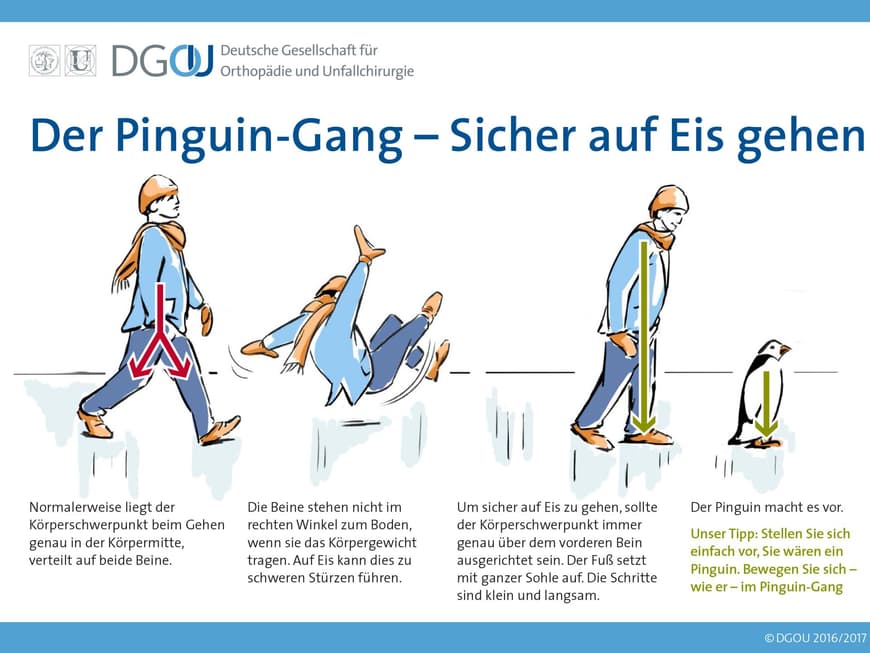
Although winter has been largely mild so far this year, it showed its full potential at the weekend. Large parts of the country experienced freezing rain, resulting in slippery sidewalks and roads. The ADAC counted dozens ofaccidents, including serious ones, and even those on foot were sometimes hit hard. The German Society for Orthopaedics and Trauma Surgery (DGOU) reports that orthopaedists and trauma surgeons are particularly busy in snowy and icy conditions, whether it's broken bones, bruises, strains or lacerations.
What is the best way to behave in icy and snowy conditions to avoid slipping?
The penguin walk
Our feathered friends in tails know exactly how to move safely over ice in icy conditions - after all, they hardly ever walk on unfrozen ground. And we can learn a thing or two from penguins: the DGOU advises us to do as the seabirds do in icy conditions.
The penguin walk is a simple method of walking safely on frozen ground and avoiding a fall,
emphasizes DGOU Secretary General Prof. Dr. Reinhard Hoffmann.
And how does the penguin gait work?
In the penguin gait, the body's center of gravity is aligned over the front leg, i.e. the leg that is stepping - the foot always touches down with the whole sole and points slightly outwards. The weight-bearing leg is therefore at a right angle to the floor. The slightly forward-leaning posture provides more stability. This reduces the risk of losing your balance and falling on slippery surfaces,
explains the DGOU.

Further tips from the company on the correct behavior in icy conditions:
- Look for a handhold: Walk with someone hooked in or feel your way along the wall of a house or a railing.
- Only wear shoes with a tread in winter: If you have to wear elegant shoes at work, it is best not to change them until you get to the office.
- Wear shoe spikes: Normal shoes can also be made suitable for winter by using spikes. The spikes, also known as anti-slip soles, can be quickly and easily attached to shoes.
- Leave the bike parked: The bike should be out of season in winter. As the bike does not have winter tires, the wheels quickly slip sideways when braking on snow and in icy conditions - a high risk of accidents.
- For older people who are unsteady on their feet: Don't take any unnecessary risks and stay at home if possible in very icy conditions.
